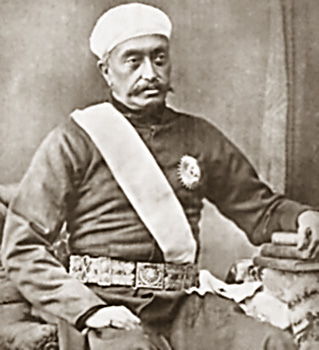 Ancient history of Farrukhabad District dates back to remote antiquity. Large numbers of stone statues are found at Sankisa and Kampil. Farrukhabad can claim great antiquity in sculpture. The Aryans settled here, who were close allies of Kurus. The traditional history of Farrukhabad District is gleaned from the Puranas and Mahabharata. This region rose into great prominence during the Mahabharata period. Kampilya was the capital of South Panchala. Panchala figures in the tenth position in the list of the 16 premier states (Mahajanpada) in the time of Lord Mahavira and Lord Buddha and is said to have comprised the region covered by the present districts of Bareilly, Badaun and Farrukhabad.
Ancient history of Farrukhabad District dates back to remote antiquity. Large numbers of stone statues are found at Sankisa and Kampil. Farrukhabad can claim great antiquity in sculpture. The Aryans settled here, who were close allies of Kurus. The traditional history of Farrukhabad District is gleaned from the Puranas and Mahabharata. This region rose into great prominence during the Mahabharata period. Kampilya was the capital of South Panchala. Panchala figures in the tenth position in the list of the 16 premier states (Mahajanpada) in the time of Lord Mahavira and Lord Buddha and is said to have comprised the region covered by the present districts of Bareilly, Badaun and Farrukhabad.
Around the middle of the fourth century BC, probably in the reign of Mahapadma Nanda, this territory was annexed by Nanda Dynasty of Magadh. The present district of Farrukhabad contributed much towards the peace and prosperity of Gupta age. The close of the 10th century AD was marked by the Muslim invasion in India. Rajyapala was the ruler of Kannauj when Mahmud of Ghazni attacked India. After that he proceeded towards Kannauj in 1018 AD. During the reign of Chauhans (1170-1194 AD) Kannauj became powerful.
Further, the medieval history of Farrukhabad District states that after Sikandar Lodhi`s death in 1517, his son, Ibrahim, became emperor. He reached Kannauj. The result was that several Afghan chiefs willingly joined and Kannauj became a fief under the sovereignty of the Mughals. Kannauj appears to have been recovered by Afghans. After the death of Aurangzeb in 1707, and the decay of the Mughal empire led to the establishment of several independent principalities in north India of which was the territory of Farrukhabad which played an important part in the subsequent history of the district. In 1769 the Marathas again attacked Farrukhabad. In 1773, Shuja-ud-daula succeeded in expelling the Marathas, the south parganas of the district included all Farrukhabad south of Kali Nadi except Chibramau. From 1780 to 1785 a British resident was appointed in the district at Fatehgarh.
According to the modern history of Farrukhabad District, freedom struggle of the country had huge impact in the district. The close of 19th century saw the rise of the activities of the Arya Samaj in Farrukhabad and other towns. 20th century saw the down of nationalism in the country. During the anti partition of Bengal agitation of 1905, public meeting, strikes and protests were held. The Non Cooperation Movement started by Mahatma Gandhi in August 1920 also had its impact in the district. Meetings were held at Farrukhabad, Fatehgarh, Kampil, Shamsabad, Kannauj, Indergarh and other towns. Farrukhabad District had contributed heavily in the freedom movement of the country.



















